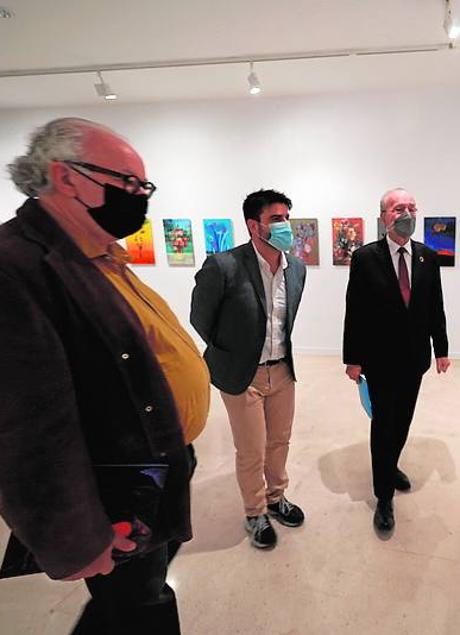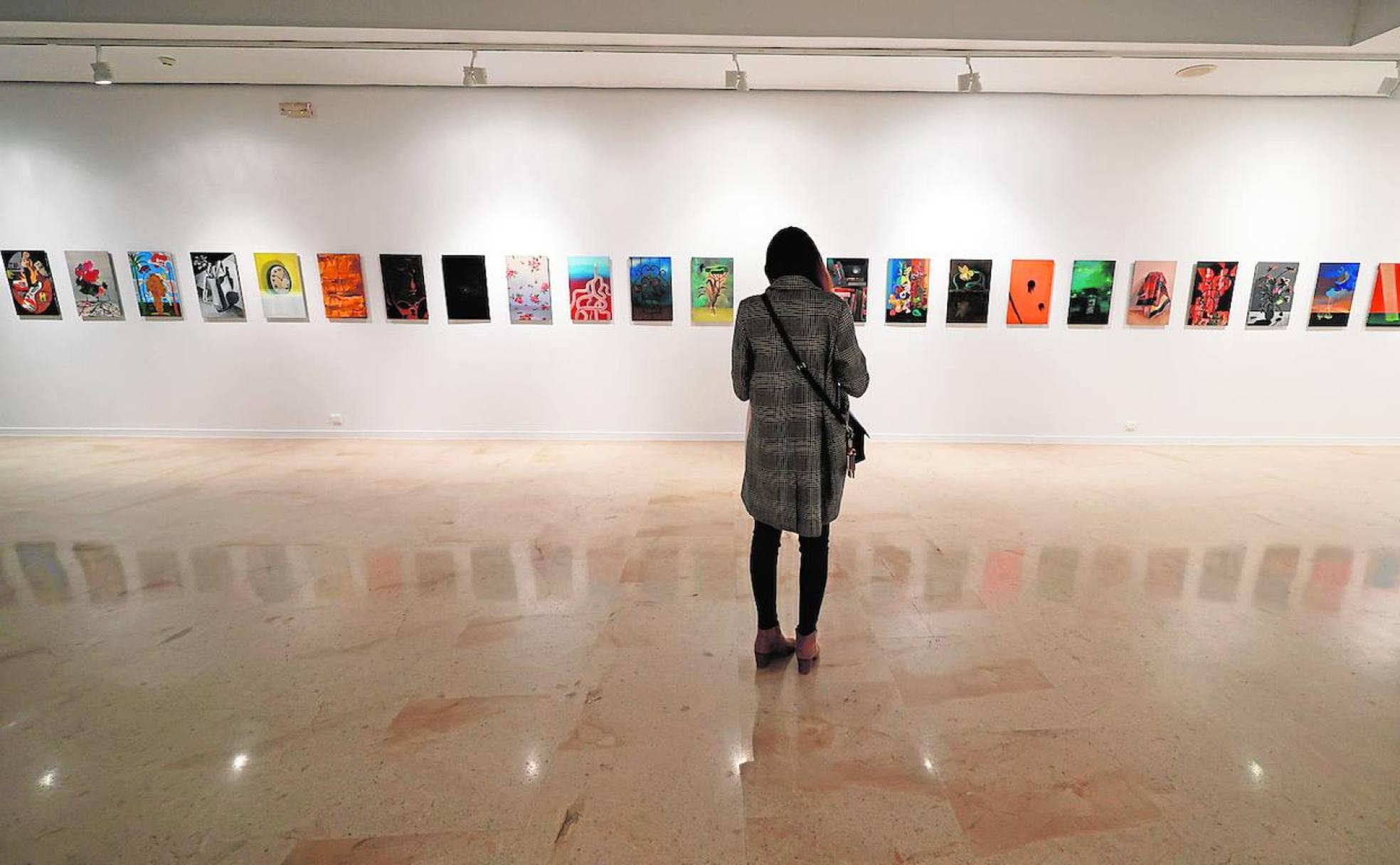Cristóbel Quintero’s ‘99 things’ go back to the origins of art
The Sevillian artist is exhibiting at La Coracha with works which include still life and a constant play between different styles
Cristina Pinto
Friday, 8 April 2022, 10:56
In the centre of the room, Cristóbal Quintero begins to talk about some of his work. Without really meaning to, he starts at the end, with the picture that references the Corinthian legend about the origin of painting: “A woman traced with a piece of charcoal the profile of the shadow cast by her boyfriend, who was going off to war. That’s how I end it,” he says. He is referring to the end of a series of almost 100 works, called 99 Cosas (99 things), which can be seen at the CAC La Coracha until 19 June.
During the opening Fernando Francés, the curator of the exhibition, said “There is nothing more postmodernist than turning painting itself upside down and, in many of these works, techniques appear which are the opposite of what the artist intended”. Even the meanings of his works are the other way round, including this piece in the display which explains the origins but is actually the finishing point of ‘99 things’.
This painter from Pilas, in Seville province, began this series of oils on panels at the start of the pandemic and, when he had completed about 70, he started to think about “a hypothetical history of art and some cycles. I found meaning in this story and it can be seen several times in the series,” he says.
He uses elements of still life: from flowers, a clock and a skull to vases, brushes and mirrors. And, from there, he starts to narrate the cycle of life itself and that becomes the cycle of his painting. He stands in front of the first piece in the exhibition and, pointing to it, says “This is the origin, it dazzles, there is nothing...”
After that, Cristóbal Quintero continues explaining how he uses his brushes to build up language and knowledge, mysteries, references to cubism, mathematics and geometry, Japanese painting, interior and exterior, German expressionism, idealism... many details and inspirations with which this painter sees far beyond and, as Fernando Francés said, turns it upside down.
"This is a dream for me"
The mayor of Malaga, Francisco de la Torre, was also at the opening and he praised the continued efforts by the CAC to feature artists who are from the region. “Many things in his paintings are clearly from the Sevillian school. It is such a good idea to exhibit quality artists who have trained in Andalucía,” he said.

In response Cristóbal Quintero referred to his own time as a student: “When we were in the faculty we always wanted to come to Malaga, and to the CAC to see the exhibitions. Being here now and displaying my own work in Malaga is a dream for me,” he admitted.
Cézanne, Mondrian, Friedrich, Yves Klein and Kosuth are some of the references Quintero uses in his paintings, which combine different artistic styles and times from the history of art, related through his own reflections. “In the end this story is how I conceived it, because everything in it relates to something,” he says, as he walks around his ‘99 things’.
History of art mixes with history of rock in one of his paintings in which you can see an electric guitar, matches, fire and Wild Thing, the song with which Jimi Hendrix set fire to his guitar in the 1960s.
“Here I’m playing with cubism, which starts with the guitar and the story about Jimi Hendrix and his concert. Picasso and Hendrix are two monsters together,” he explains.
On the second floor of the CAC there are more of his works but in large format and they stand out because of the appearance of the human figure and hints of the abstract.
“In the end what I do is take compositions of a lot of styles so there is dialogue between them and when you get close to the picture you see the aesthetic concern in how I resolve one part or the other,” says Quintero.
The ‘99 things’ and other works, enable us to stroll through the history of art and constantly see the origin, the end and everything that lies in-between.



